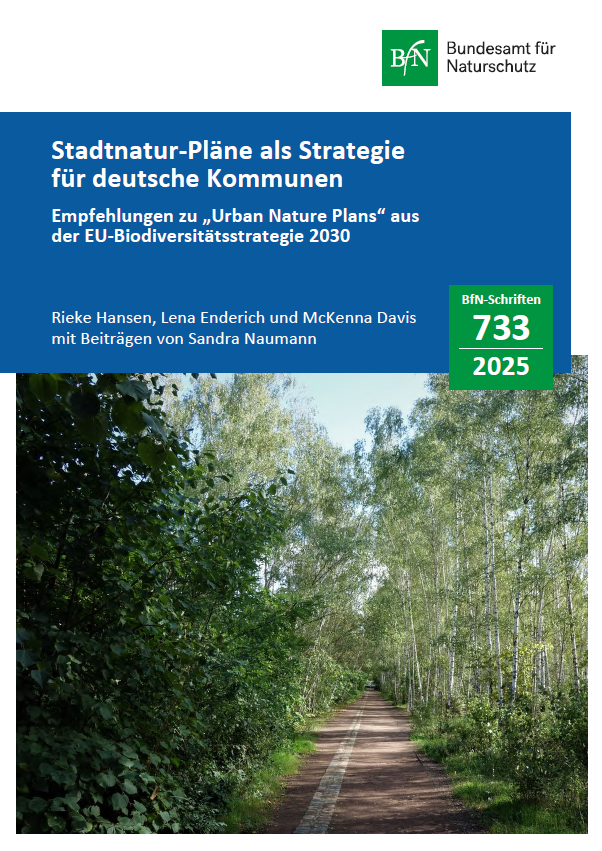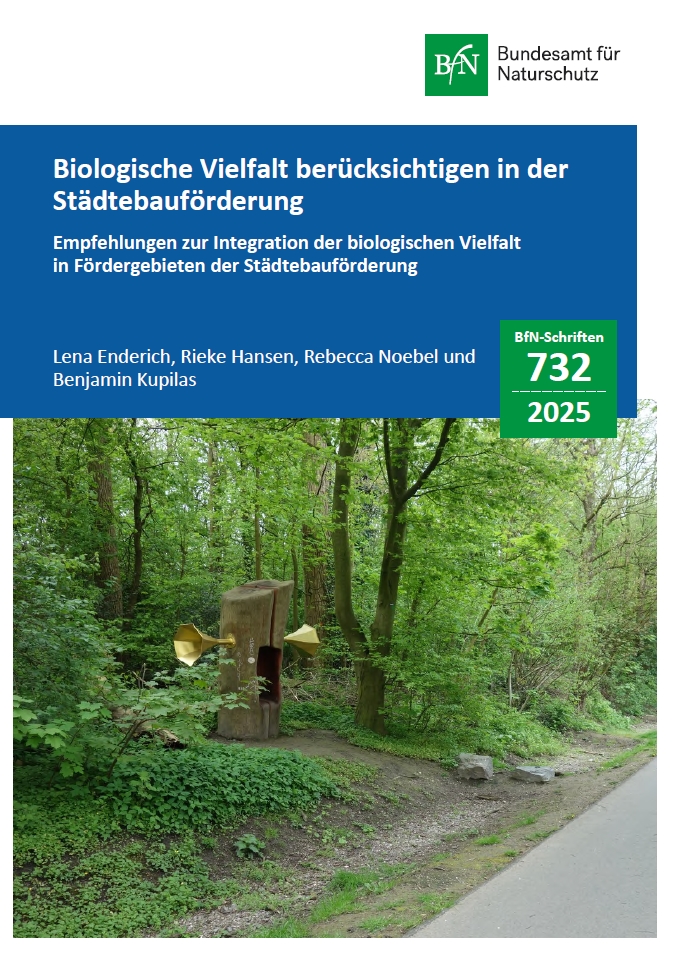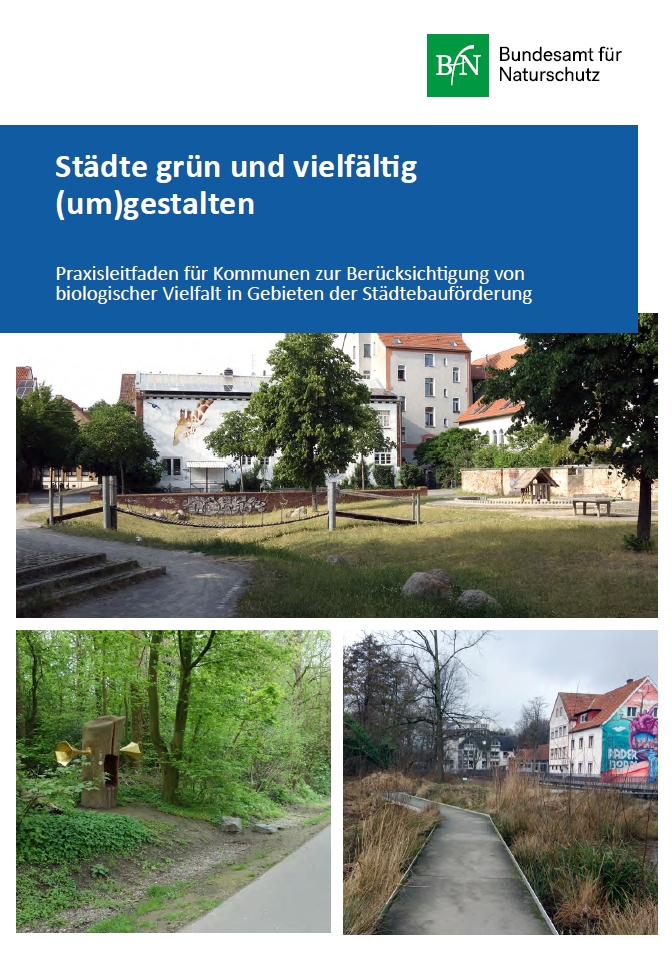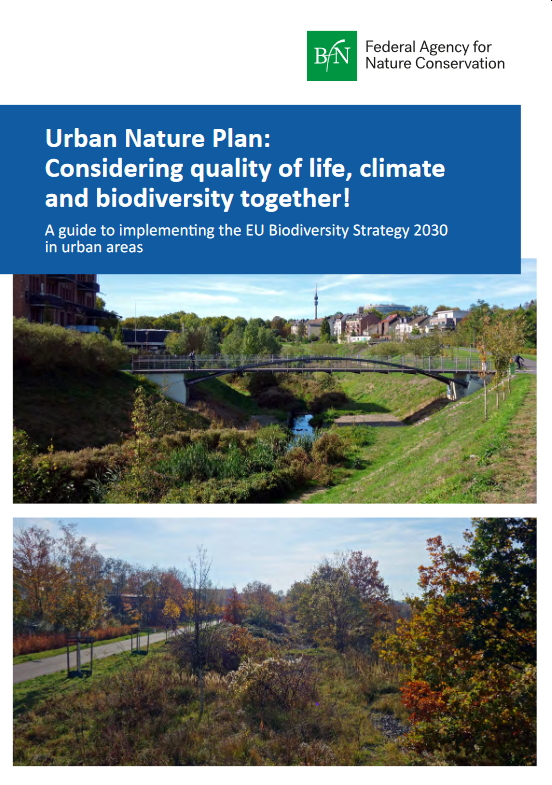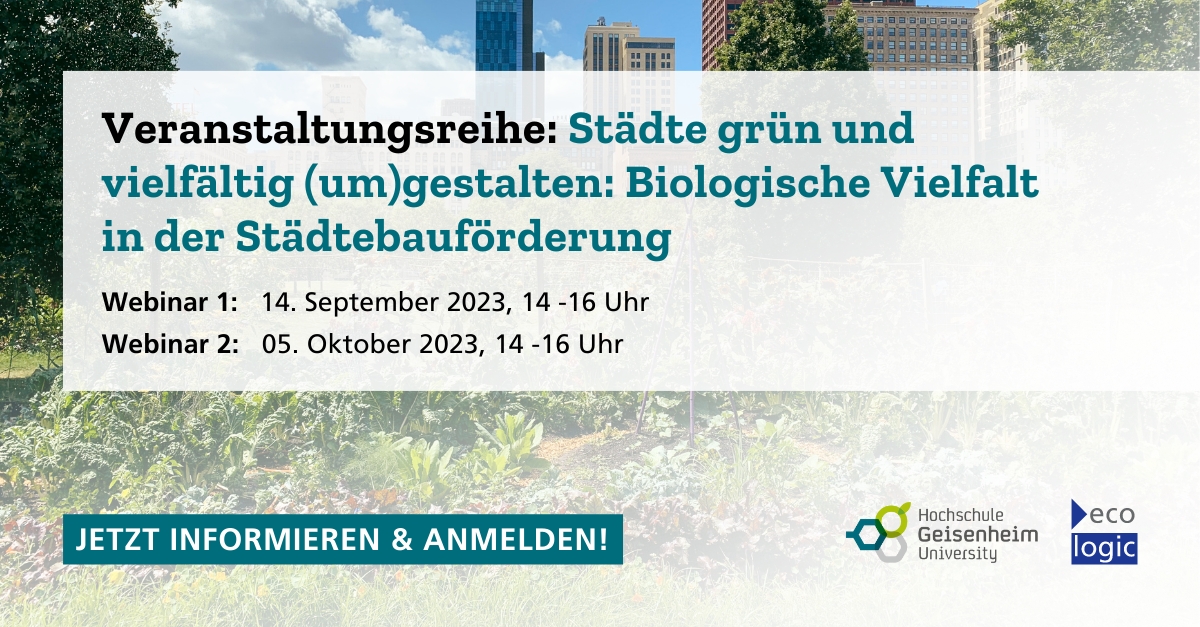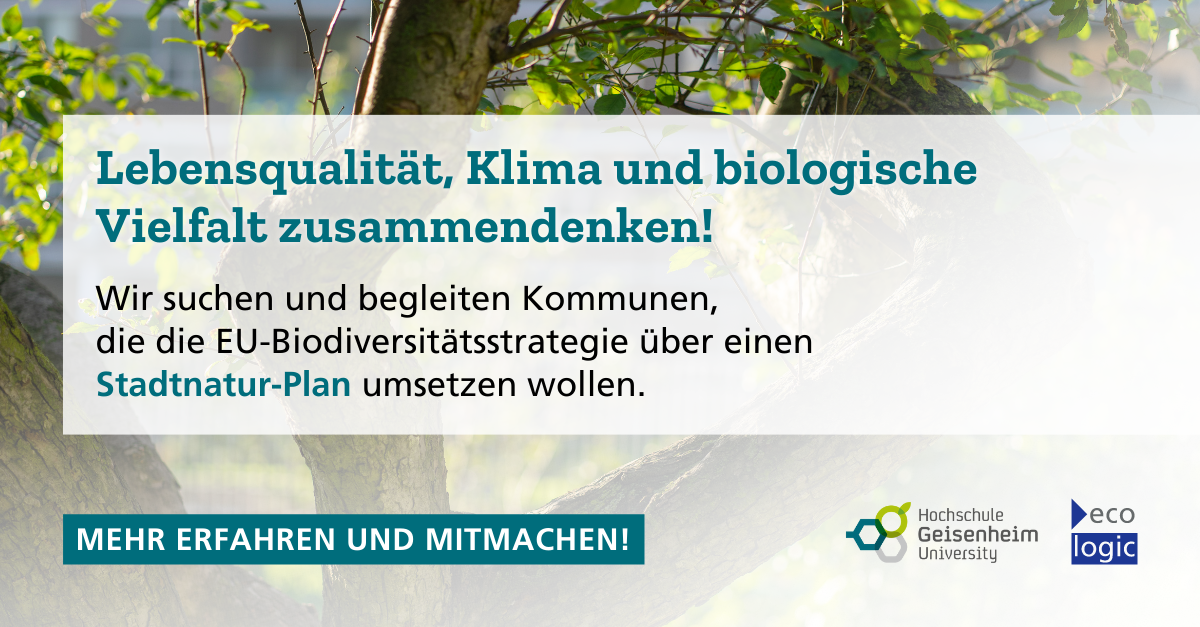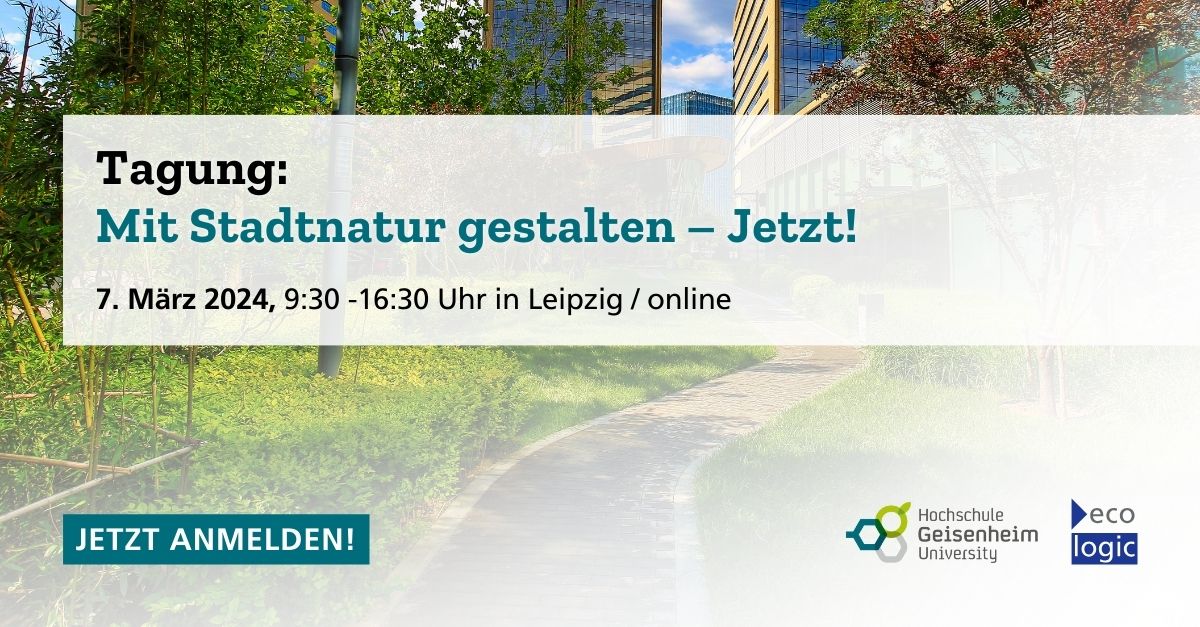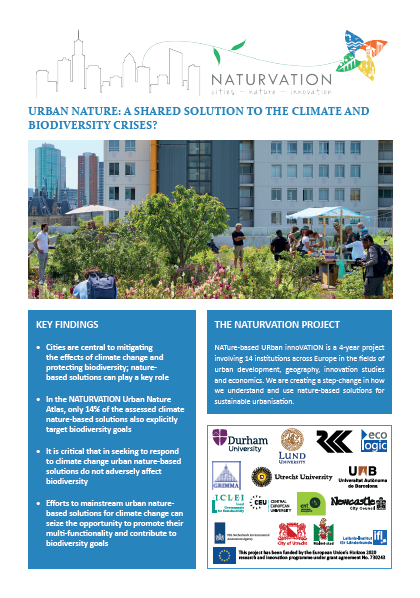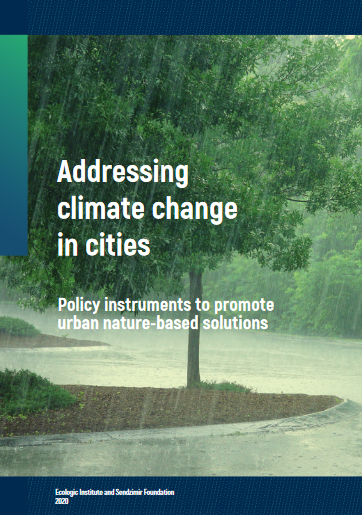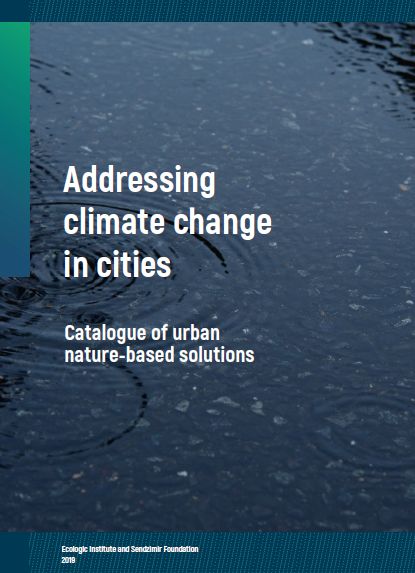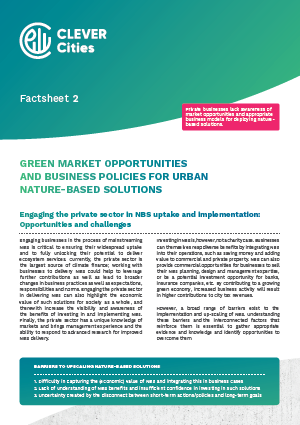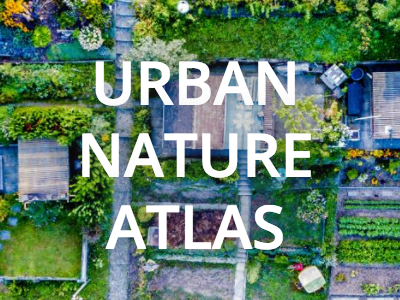Stadtnatur-Pläne als Strategie für deutsche Kommunen
Empfehlungen zu "Urban Nature Plans" aus der EU-Biodiversitätsstrategie 2030
- Publication
- Citation
Bundesamt für Naturschutz (ed.) (2025): Stadtnatur-Pläne als Strategie für deutsche Kommunen. Empfehlungen zu "Urban Nature Plans" aus der EU-Biodiversitätsstrategie 2030. Bonn.
The EU Biodiversity Strategy for 2030 calls on all European cities with more than 20,000 in-habitants to develop and rapidly implement an "Urban Greening Plan". These plans should contain ambitious targets and measures to conserve biodiversity, promote human well-being, and contribute to climate adaptation and mitigation. The European Commission now refers to these plans as "Urban Nature Plans". The project documented in this report aimed to stimulate a discourse on Urban Nature Plans in Germany and to develop recommendations for local authorities.
Review of Existing Guidelines and Research Initiatives
As a first step, the project team evaluated publications, research and development projects by the European Commission and other organizations that elaborate on the understanding of Urban Nature Plans. The results showed that the ideal Urban Nature Plan is a complex-integrated planning project. Preliminary studies indicate that a number of established planning instruments already cover some aspects similar to Urban Nature Plans, but only partially meet the requirements for Urban Nature Plans.
Expert Dialogue: Potentials and Ambitions of Urban Nature Plans
The opportunities and potential of Urban Nature Plans for German municipalities were discussed in an expert dialogue with representatives of associations, government organizations, municipalities and the scientific community. It was emphasized that they should be understood as ambitious, integrated and effective strategies. It was also emphasized that Urban Nature Plans should not replace existing sectoral plans, but rather complement them by demanding a clear commitment from local politicians for more and higher quality urban nature, promoting the participation of different stakeholder groups and accelerating the implementation of measures.
Workshops Demonstrate Local Flexibility and Implementation Frameworks
The tool of Urban Nature Plans was discussed with several municipalities in four workshops. It became clear that Urban Nature Plans should be flexible and adaptable to local needs and capacities. Ideas ranged from flexible and action-oriented strategies to complex planning projects that municipalities can manage as part of landscape or open space planning.
Overlaps with Established Planning Instruments
To determine the overlap between Urban Nature Plans and existing planning instruments, plans from three different cities were analyzed. It became clear that particularly open space plans and landscape plans can fulfill many of the requirements of Urban Nature Plans. In the interaction of different planning instruments in a municipality, it can be assumed that especially larger cities already fulfill a good part of the requirements. At the same time, it can be assumed that there are often gaps around the implementation of integrated working methods, co-design approaches and monitoring. The evaluation of the plans confirms that Urban Nature Plans can indeed complement existing instruments with innovative and ambitious approaches.
Municipal Guide: Practical Entry Points and Funding Needs
A guideline for municipalities has been developed that demonstrates the added value of Urban Nature Plans and the different ways in which they can be implemented. This resource provides a practical basis for testing Urban Nature Plans as a planning instrument in municipalities. The project has, however, also made clear that Urban Nature Plans should be seen as a sophisticated planning instrument and that local authorities will need support and incentives from the federal and state governments to successfully design and implement them.
